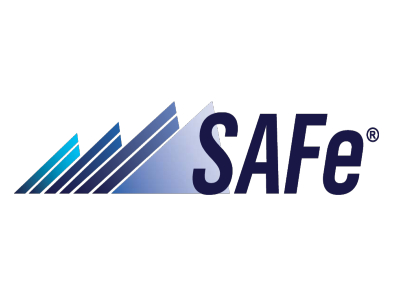 Not just for devs anymore - Marketing with Agile at Scale
Not just for devs anymore - Marketing with Agile at Scale
More and more teams are adopting agile principles in their everyday work. The benefits of adaptability, collaboration, speed to delivery, and cost are hard to avoid. This “agile revolution” started with smaller organizations. As these organizations began to flourish, larger enterprise organizations decided that they should, too, be using agile methodologies. Agile practitioners coined this as “agile at scale.”
What agile at scale does for your organization is in its name. You might have one or two teams following agile principles, but you want everyone to have the same agile mindset, so you scale it out to your other teams (usually non-technical). There are some frameworks and models that you can use to do this. Some of the most popular are LeSS, SAFe, Scrum@Scale, Disciplined Agile (DA), and Spotify.
Before agile at scale, we had agile. This framework’s original intended use was for software teams building products. After the benefits became obvious, other teams started to adopt the practice, such as legal, finance, marketing, and HR. One of the most common case studies for non-tech teams is marketing. The benefits of agile really shine through in marketing teams because of the complex and variable work that they take on.
For the rest of this post, we will discuss the extensive benefits of combining the two, agile at scale and agile marketing. This post is intended for teams that operate as a marketing department in a large organization and marketing teams that work in marketing agencies.
An iterative and test-driven approach
The first benefit of agile marketing is for all agile teams, not just those working with agile at scale. Practicing agile makes marketing teams focus on their work in set increments. If they are using scrum, we would call this increment a sprint. The team will set a goal to deliver some sort of value at the end of this iteration. Once the team delivers this value, it is given to the customer or stakeholder, who then can provide immediate feedback.
Why does this help marketing teams? Traditionally, teams took a longer approach to developing marketing campaigns. Each person in the team would be responsible for a different aspect of the campaign, and in the end, it would all come together like a puzzle. But what happens if the marketing goals change partway through their work? What happens if the feedback isn’t good? With iterations and consistent customer feedback, the marketing team can quickly find out what works and what doesn’t.
Adaptability
This benefit is related to the above one. If a team works in iterations and gets fast feedback from their stakeholders, they will inevitably be adaptable. Adaptability, in turn, provides the benefit of always being ready for change. In many marketing environments, change is constant. Strategies that worked last year might not work this year. By working in short iterations with long-term goals in mind, marketing teams can adapt their strategies to match the needs of their target audience.
In addition to changes in the target audience's needs, adaptability gives the marketing team a chance to react to development changes. If a new feature has some last-minute changes, the marketing team can quickly adapt its campaign to fit the product change.
 Collaboration
Collaboration
Bringing teams together across departments is an essential benefit of agile at scale. Marketing teams are not exempt from this. Agile at scale provides more release predictability for development teams. A benefit of this predictability for a team such as Marketing is that they will know when to expect a product or feature release to plan their marketing activities accordingly. If something delays the product delivery, the marketing team can act to delay or even change their work. If something in the product needs to change and the marketing team creates a new campaign, they can do so without much planning.
Another benefit within the collaboration category is the marketing team gaining insight into the evolution, development, and design of new features. Product development teams generally work with something called personas, which are their average customer (or who they think their average customer is). Getting insights and collaborating on how the development and design teams make these personas could help marketers produce better content. On top of this, knowing where the product has come from compared to how it is now can help marketers write a more detailed story for their work.
Measurability
The traditional way of running a marketing campaign entails creating a campaign with a long, waterfall-like approach. Once the campaign is launched, they will wait for it to complete and then inspect the results.
The agile approach to campaigns would involve more consistent measuring of the data as it comes in. The marketing team would have prepared for adjustments or potential pitfalls in the campaign and have those ready to go depending on how the campaign goes. This speeds up the process of improving campaigns to near real-time, allowing for more successful campaigns in the future.
Cross department transparency
Marketers do not create great work alone, siloed inside one department. Collaboration and inter-department communication are necessary for marketers to stay on top of their game.
Agile marketing requires extensive planning for each iteration. Departments that are closely related, such as sales and marketing, benefit from this agile mindset. Instead of wondering what is on the horizon for each team, it could possibly be a few clicks away, depending on what issue tracking tool you are using.
Don’t leave the marketers out
In the end, when you embark on your scaled agile journey, try not to leave the marketing team behind. They might not be your first thought when you consider taking on agile at scale, but they are also a huge beneficiary of it. The dependencies that your marketing team has with other departments can be a bottleneck for your agile transformation. Keep the marketers in mind so that your agile at scale framework or model can thrive.
 The best journeys are taken together. Let us accompany you on your SAFe journey every step of the way.
The best journeys are taken together. Let us accompany you on your SAFe journey every step of the way.
We know that a SAFe implementation can seem daunting, but it doesn't have to be with the right tools and the right partner. So whether you're about to take your first steps or ready to scale up, we will be there to help you evaluate and guide you through the process. Together with Germany's leading SAFe partner, Kegon, we will use our expertise in Agile Hive, Jira, and Jira Align to help you find the right methods and tools to fit your needs wherever you are on your SAFe journey.
Get in touch with us today so we can help get you started the best way possible for your organization.
Further Reading
- Agile Hive Implementation Project
- Scaled Agile: SAFe 5.0 changes and how Agile Hive maps them
- SAFe with Atlassian tools: Agile Hive is a Scaled Agile Platform Partner
- SAFe resources to get you started right
- Agile Hive: What is SAFe®?
Learn more about Creative Commons licensing and //Seibert/Media


 The best journeys are taken together. Let us accompany you on your SAFe journey every step of the way.
The best journeys are taken together. Let us accompany you on your SAFe journey every step of the way.


